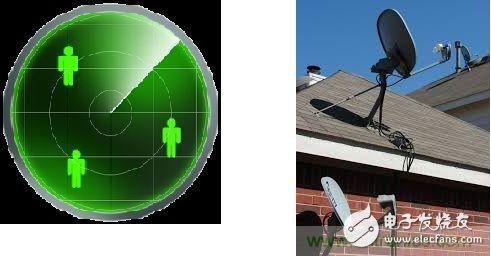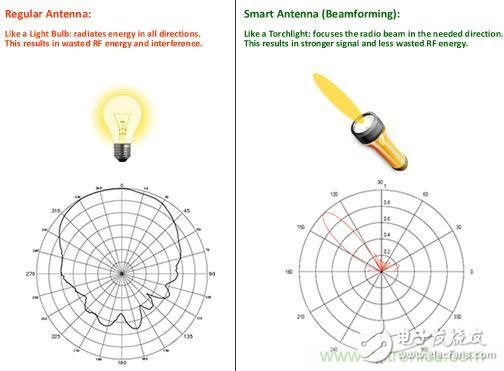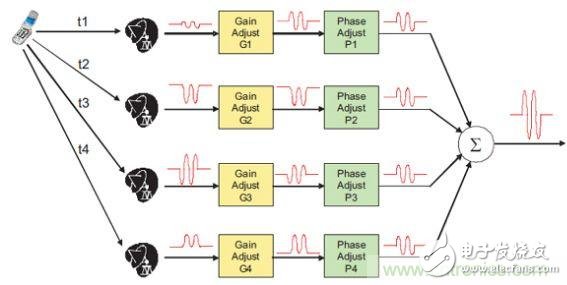
Everyone must have had such experience. When there are not many people in a room, the cell phone signal is very good; when many people gather in the room, the cell phone signal will be worse, and there is no way to call. In the final analysis, this phenomenon is that spectrum reuse is not done well enough to allocate the necessary spectrum resources to everyone.
There are three classic spectrum multiplexing methods: instant division multiplexing (typical application: China Mobile 2G), frequency division multiplexing (typical application: China Unicom 3G) and code division multiplexing (typical application: China Unicom 3G). An example can be used to illustrate the difference between time division multiplexing, frequency division multiplexing, and code division multiplexing. There are many people in a room who want to talk to each other. To avoid mutual interference, the following methods can be used:1) The speaker speaks in turn in order (time division multiplexing).
2) The person speaking can speak at the same time, but each person speaks differently (frequency division multiplexing).
3) The speakers speak in different languages, and only those who understand the same language can understand each other (code division multiplexing).
Of course, these three methods are combined with each other. For example, different people can communicate in different languages ​​in order (ie China Mobile 3G TD-SCDMA). However, these three classical multiplexing methods cannot fully utilize spectrum resources. They cannot communicate with multiple users at the same time (TDMA), or cannot use all spectrum resources (FDMA), or require multi-bit symbols to pass 1 bit. Data (CDMA).
So, is there a way to overcome the shortcomings of the above multiple ways, so that multiple users can use all spectrum communication at the same time? Let's first think about what happens if you speak in the same language in the same tone in one room.
Obviously, mutual interference will occur in this case. This is because the signal will travel in all directions, so one person will hear the voices of multiple people and cannot communicate effectively. However, if we let everyone who speaks use a megaphone and let the sound spread only in a specific direction, it will not interfere with each other.
In wireless communication, it is also possible to make electromagnetic waves propagate in a specific direction, so that users in different spatial directions can simultaneously use all spectrum resources to communicate without interruption, that is, space-division mulTIple access (SDMA). Another benefit of SDMA is that it reduces the waste of signal energy: when a wireless signal radiates in all directions in space, only a small portion of the signal energy is received by the receiver as a useful signal. Most of the signals are not received by the corresponding receiver, but radiated to other receivers as interference signals.
When SDMA is used, the signal energy is concentrated in a specific direction, on the one hand, the interference to other receivers is reduced; on the other hand, the waste of signal energy is also reduced.
In 5G communication, SDMA is massive MIMO (massive MulTIple-Input MulTIple-Output, which means that large-scale transmit antennas and receive antenna arrays are used at the transmitting end and the receiving end respectively, so that signals are transmitted through the large-scale antenna array of the transmitting end and the receiving end. And receiving, thereby improving the quality of communication) an important example of technical applications, and the technique of propagating wireless signals (electromagnetic waves) only in a specific direction is called beamforming.
With beamforming, many small partners can enjoy mobile phone surfing in the same place at the same time without worrying about signal interference.

The word "beam" looks a bit strange, but the "beam" must be familiar to everyone. When a beam of light is in the same direction, it becomes a beam of light, similar to the light from a flashlight. Conversely, if the light radiates in all directions (such as light from a light bulb), the beam cannot be formed. Like the beam, when all the waves travel in the same direction, a beam is formed.

The beam of light in life, the beam is also a kind of beam
Engineers have used beams for quite a long time. In World War II, engineers have used beams in radars that detect the position of all targets in the entire space by scanning the beam direction.
Another example is satellite communications, the "pan antenna" commonly used in satellite TV in our lives. The distance between the satellite and the ground receiving antenna is very long, and the signal attenuation is very large, so the energy of the satellite signal when it reaches the ground is very small. Therefore, we need to find ways to collect the energy of each signal sent by the satellite. When the satellite's signal radiates in all directions, most of the energy is not received by the ground antenna, but is wasted. To avoid this waste, we use beams when we receive and transmit satellite signals. Thus, the transmitted electromagnetic wave signals are concentrated in one direction, and as long as the receiving antenna can be aligned in this direction, as many signals as possible can be received.
The traditional application of beams is radar (left) and satellite communication (right)
The realization of the beam is very simple, as long as the opaque material is used to cover the light in other directions. This is because the visible light propagates in a straight line and the diffraction ability is weak. However, in a wireless communication system, a signal exists in the form of an electromagnetic wave having a strong diffractive power, so that beamforming cannot be performed using a method of generating a beam, and other methods must be used.
The signal energy of the wireless communication electromagnetic wave is radiated into the air by the antenna at the transmitter and received by the antenna at the receiving end. Therefore, the radiation direction of the electromagnetic wave is determined by the characteristics of the antenna. The directional characteristics of the antenna can be described by the radiation pattern (i.e., the amplitude of the signal transmitted by the antenna in different directions in space).
Ordinary antennas have a weak directional pattern (ie, the radiant intensity in each direction is similar, similar to a light bulb), and the most basic way to form a beam is to use a radiation-oriented antenna (ie, aiming in one direction of radiation). , similar to a flashlight).
However, such antennas tend to be bulky and difficult to mount on mobile terminals (imagine what would be the case with a lid antenna on the iPhone). In addition, beamforming requires that the direction of the beam can be changed with the relative position between the receiving end and the transmitting end. The traditional method of forming a beam using a single antenna requires rotating the antenna to change the direction of the beam, which is obviously not possible on mobile phones. Therefore, a practical beamforming scheme uses a smart antenna array.

The smart antenna array principle is not complicated. When two columns of waves generated by two wave sources interfere with each other, in some directions, the two columns of waves are mutually enhanced, and in some directions, the two columns of waves are exactly offset (as shown in the following figure).

In beamforming, we have many sources (ie, antenna arrays). By carefully controlling the relative delay and amplitude between the waves emitted by the source, we can concentrate the energy of the electromagnetic radiation in one direction (ie, the receiver is located). The position of the electromagnetic wave is very small (ie, the interference to other receivers is reduced).
In addition, the direction of the antenna radiation can be achieved by changing the relative delay and amplitude between the sources, and it is easy to track the change in relative position between the transmitter and the receiver.
Beamforming has been used in WiFi routers with multiple antennas. However, it is not possible to install multiple antennas in the WiFi band like a router on a mobile phone because the antenna size is too large.
The size of the antenna is determined by the wavelength of the electromagnetic wave signal. The wavelength of the electromagnetic wave in the WiFi and current mobile phone bands can reach more than ten centimeters, so it is difficult to integrate such a large antenna on the mobile phone. To solve this problem, we can combine beamforming and millimeter wave technology.
The wavelength of the millimeter wave band is about one tenth of the wavelength of the WiFi and mobile phone bands, so it is possible to integrate multiple millimeter wave antennas into the mobile phone to realize beamforming in the millimeter wave band. Beamforming and millimeter wave technology can be described as a natural fit. Using millimeter waves can bring more bandwidth to signal transmission, and beamforming can solve the problem of spectrum utilization, making 5G communication even more powerful.

Beamforming can concentrate the energy of the signal in the direction of the receiving end, thus improving spectrum utilization efficiency. Beamforming combined with millimeter wave technology allows the communication system to have high bandwidth and support a large number of users to communicate at the same time, making the 5G system even more powerful.
Chongqing LDJM Engine Parts Center , https://www.ckcummins.com